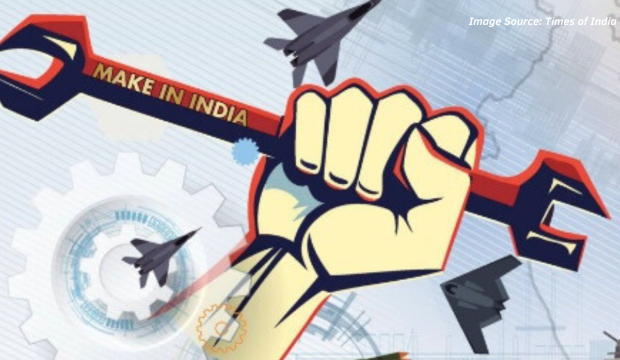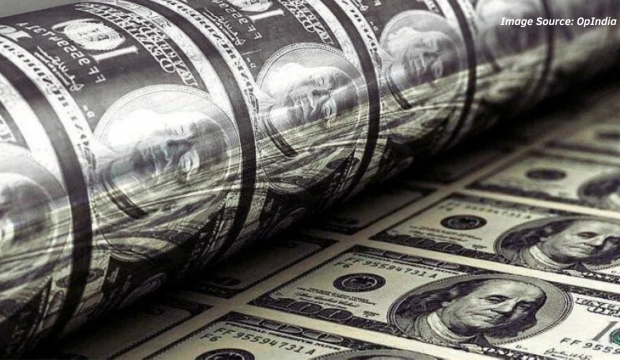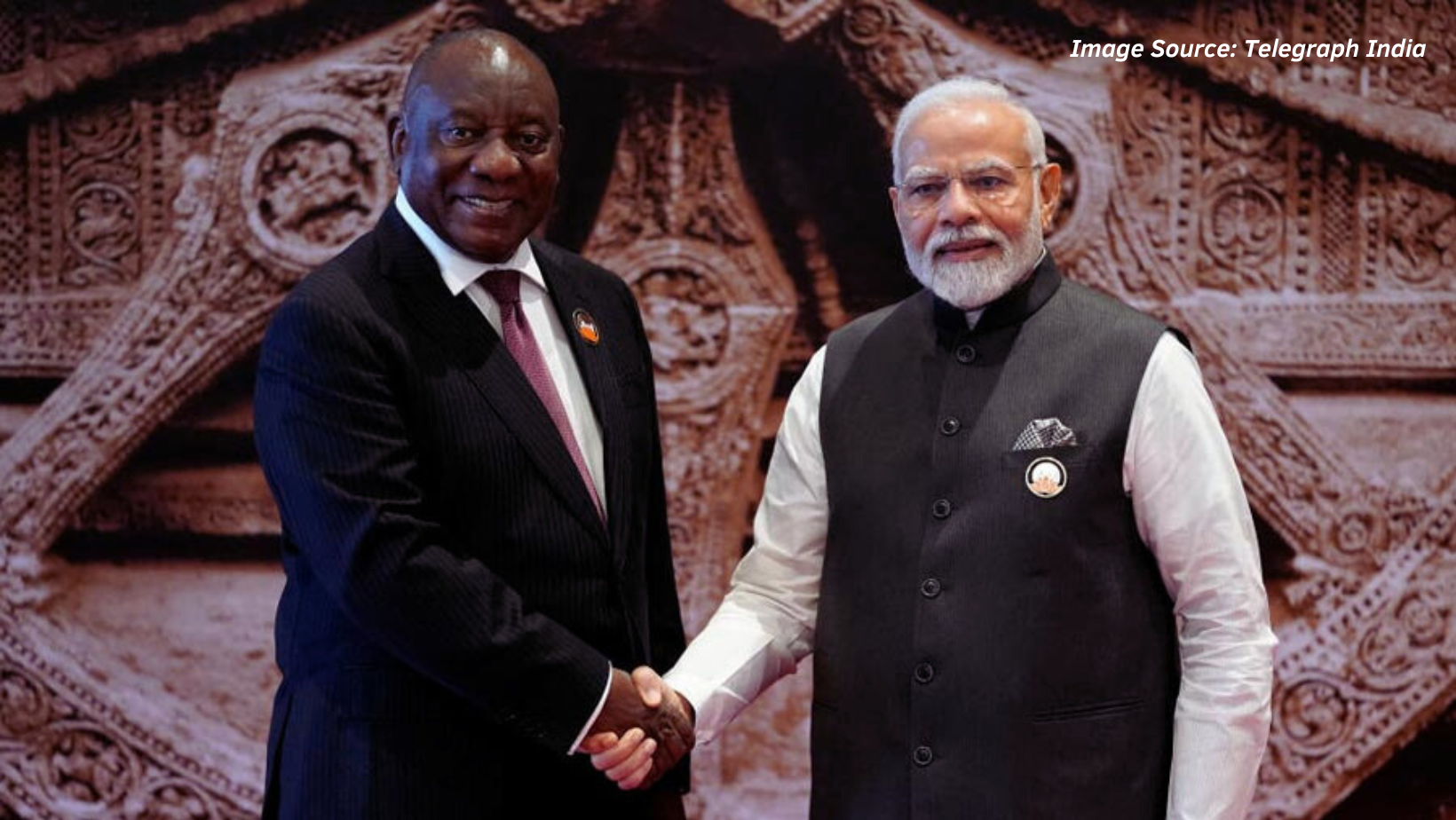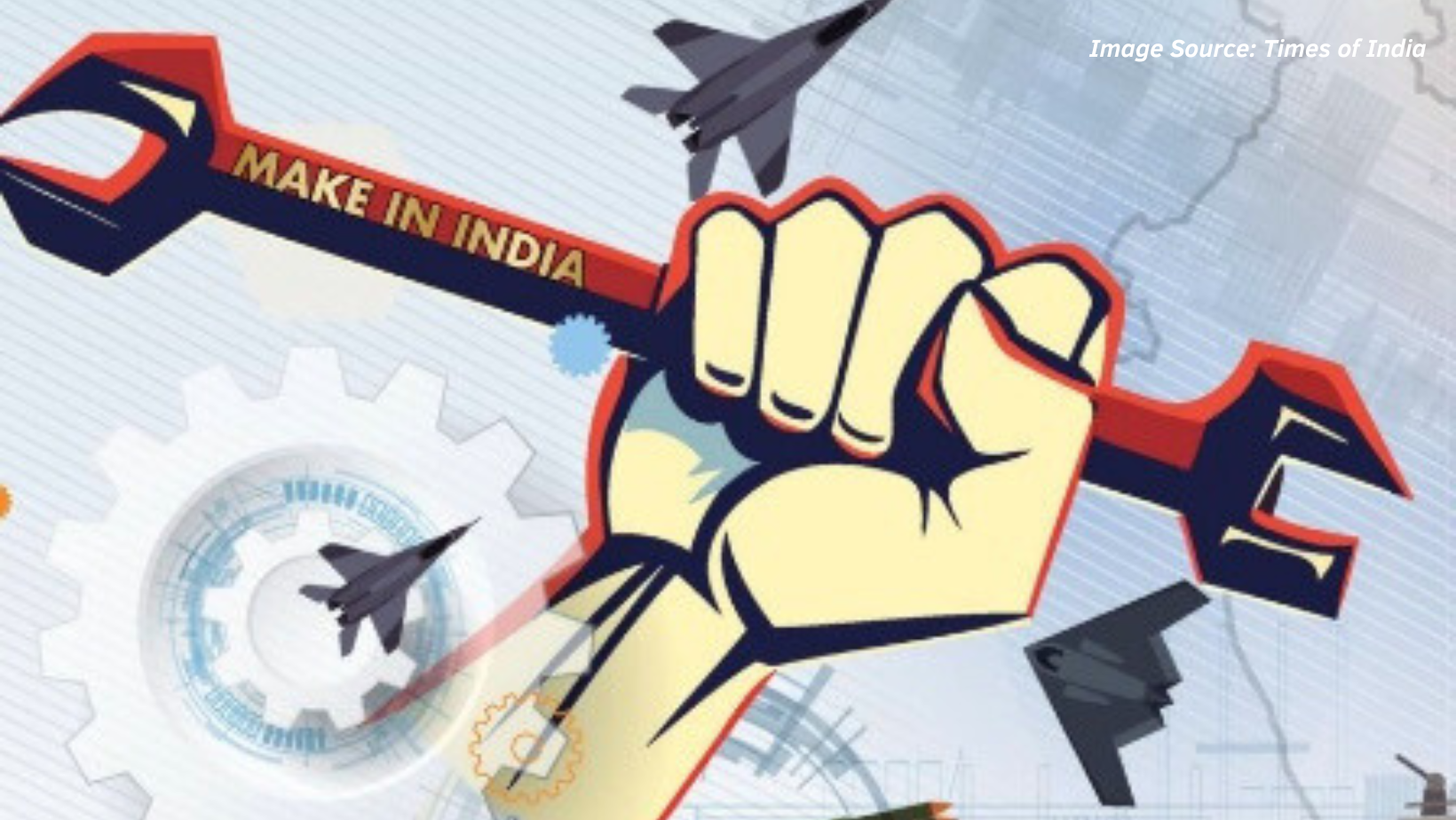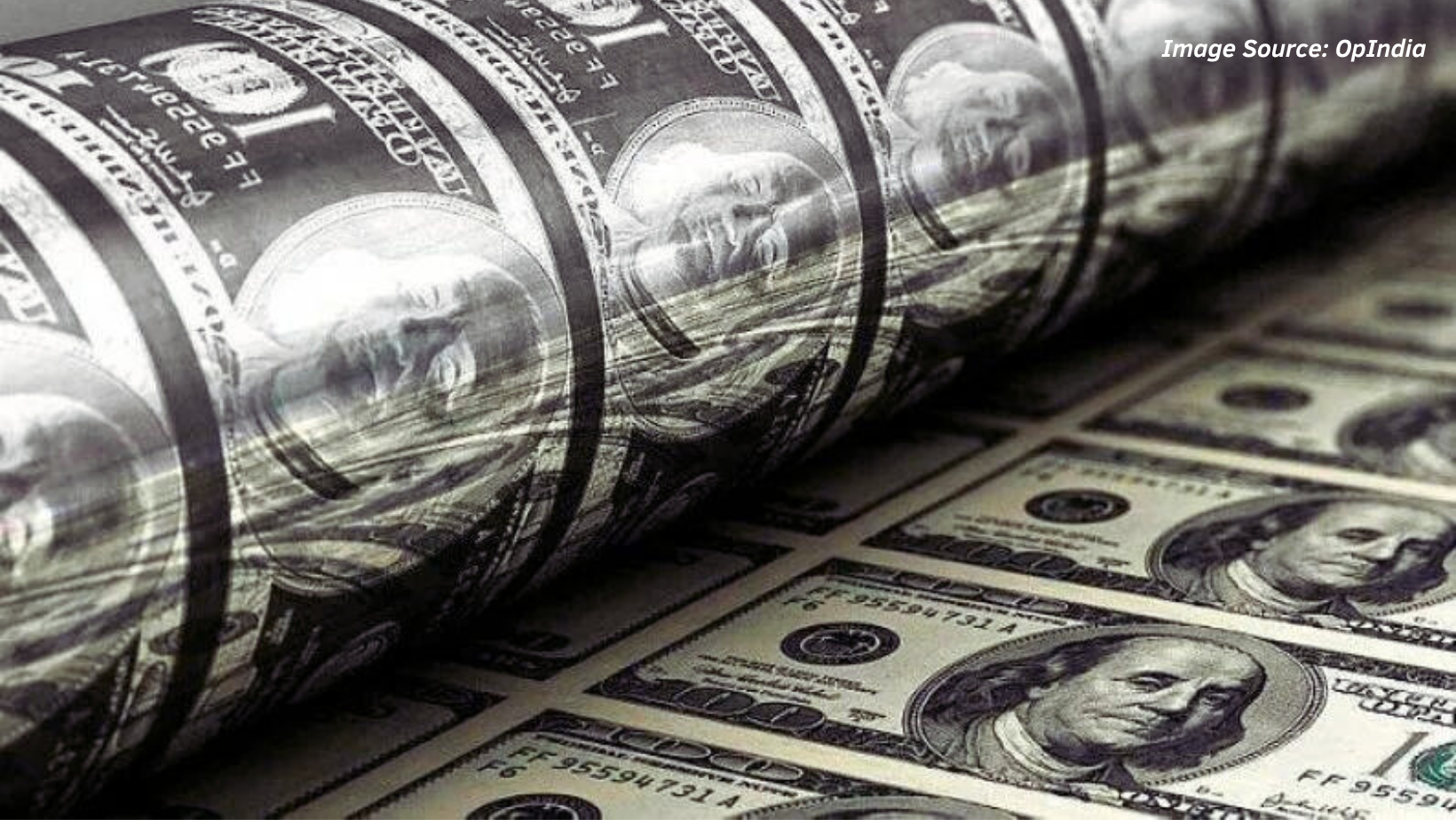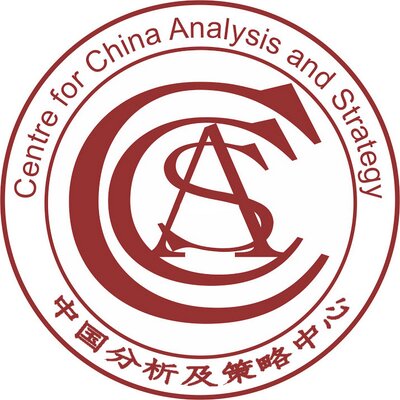Human intelligence is a complex business, wherein special agents are employed for the collection of intelligence, manipulation of information, deception by feeding false information, sowing confusion, and even counterintelligence to find out the agents of the enemy. Napoleon’s saying that “one spy in the right place is worth twenty thousand men in the field,” is as pertinent today as it was two hundred years ago. One of the key factors for the selection of a special agent is an “agent in location” who holds considerable influence in the target area and has good knowledge of the history, geography, language, culture, politics, and economy of the target area.
Public diplomacy is used to favourably influence the perceptions, preferences, and actions of other countries’ citizens/leaders. Public diplomacy creates an enabling environment that facilitates developing the ability to obtain the desired result through attraction and willing cooperation rather than coercion. Public diplomacy is about making friends and isolating enemies, promoting political dialogue, supporting trade and foreign investment, and establishing links with civil society and it engages in the often-quoted battle for hearts and minds.[1] China is aggressively increasing its global footprint through five instruments of public diplomacy i.e. Cultural, Informational, Financial, Exchange diplomacy, and Elite-to-Elite (E-to-E) diplomacy.[2] Chinese has laid great emphasis on nurturing relationships at the elite level to achieve its ambition of China’s dream and convince the world that its rise is peaceful and not threatening.
E-to-E diplomacy entails the cultivation of individuals holding influential positions abroad. Chinese E-to-E diplomacy is carried out through political, civil, military, and business leaders and includes the establishment of human footprints abroad by either occupying or placing proxies in the international organisation. In addition, Chinese intelligence agencies also cultivate influential personalities or future leaders of the target countries for current/futuristic intelligence operations.
Chinese Global Humint Operations And E-To-E Diplomacy
Post-1979, a paradigm shift in the Chinese approach towards intelligence collection was witnessed wherein the focus was shifted from inward to outward. In 2004, China created a public diplomacy department under Foreign Ministry, which resulted in the appearance of an extensive network of state actors, and state-financed media for public diplomacy. After the ascension of Xi Jinping, as President in 2013, Chinese public diplomacy endeavours were further intensified to project a more attractive image of China and quash any negative response. The Chinese approach, unlike other traditional practices of intelligence collection, doesn’t require a bad person with negative vulnerabilities but requires a good person or immature intelligencer, but subject experts, who can collect little bits of information, while performing routine activities. With the presence of influential diasporas in more than 150 countries, Chinese intelligence agencies prefer ethnic Han over others. Chinese humint operations are relationship-centric, and while interacting with Han people a more intimate and unheard concept of guanxi, face and shame vs. guilt are used.[3] The Gladys Liu case of Australia in 2019, highlights the modus operandi of China in weaponising its elite diasporas.
A phenomenal success has also been achieved by the Chinese in cultivating relations with non-Chinese elites of the world due to the blanket support of their high-handed policies and fast execution of projects without conditions and commitment to non-interference in domestic issues. Beijing’s E-to-E diplomacy plays well in the East Asia Pacific countries, where several governments have authoritarian tendencies and find China’s embrace of their top-down control a welcome alternative to remonstrations from the West.[4] The BRI has emerged as a spinal cord for Chinese E-to-E diplomacy. Some examples of successful Chinese E-to-E diplomacy are twice as many African Presidents made it to China’s Africa summit than to the UN General Assembly (2018) and a report on China’s Huawei helping African dictators to spy on the opposition (2019). The efficacy of Chinese E-to-E diplomacy can also be gauged from the number of countries supporting China in international forums on issues of Hongkong (53 countries supporting China’s crackdown in July 2020), Xinjiang policies at UNHRC (46 countries support in July 2020), Taiwan (only 13 countries supporting Taiwan in 2023). Self-censorship amongst several top leaders of the Islamic world (i.e. the then PM of Pakistan Imran Khan candidly accepting to media that “China is a friend and we discuss Uighurs issue privately not publicly” in Jan 2020) highlights the influence of Chinese E-to-E diplomacy. In addition, the reported repatriation of Uighurs from Afghanistan to China during President Ghani’s and Taliban’s regime underscores the continuity of Chinese elite diplomacy despite the change of regime after bloodshed.
The resignation of Australian senator Sam Dastyari from parliament due to his close connection with China (2017), the raid on Australian MP Shaoquett Moselmane by security agencies and the suspension from his party for his links with China (2020) highlight the successful cultivation of Australian elites. In neighbouring Nepal, the role played by glamorous Chinese ambassador Hou Yanqi for saving the government of the day after the temporary truce between Prachanda-Oli truce in July 2020 highlighted the penetration of the Chinese embassy amongst political elites of the world. To stabilise his position and reciprocate Chinese favour, PM Oli raised several nonexistent but emotional issues which include the constitutional adoption of a controversial map which claims Indian territories, Lord Ram’s birthplace, and Coronavirus.
Even in India, the Chinese have successfully infiltrated political elites. The MOU between INC and CCP in 2008, the Rajiv Gandhi Foundation receiving donations from China in 2005-06, a celebration of 100 years of CCP in Delhi by DMK (July 2021) underscores Chinese penetration amongst Indian elites/political parties.
Chinese have been successful in making inroads into policy-making international bodies. The growing pro-China views towards the Wuhan virus, recognition of Taiwan, international support to Uighurs, Dalai Lama, Hong Kong, Falun Gong, BRI, and SCS in international forums are the testimony of successful Chinese E-to-E diplomacy. China has steadily increased its influence within the UN either by increased funding or by placing its citizens/proxies at key levels. The clusters of agencies headed by China are directly and indirectly linked to its domestic agendas like the BRI, Make in China 2025, and the rise of Chinese companies.[5] China is the fifth-largest donor to the UN and the mandatory and voluntary donation of China to the UN has risen by 1096% and 346% respectively from 2010 to 2019. As of March 2020, China leads four of the 15 principal agencies of the UN i.e. the International Telecommunications Union (ITU), the United Nations Industrial Development Organisation (UNIDO), the Food and Agriculture Organisation (FAO), and the International Civil Aviation Organisation (ICAO). The Chinese presence as a leader ensures that Chinese national champions like Huawei and its standards become embedded and implemented (through UNIDO), exclusion of Taiwan from all discussion from air navigation and safety standards, during the pandemic (through ICAO). The Chinese deputies are present in nine principal agencies including the World Bank, IMF, UNESCO, and WHO. China has also won a seat at the International Tribunal for the Law of the Sea, to keep an eye on maritime disputes despite its unilateral occupation of several disputed Islands of the South China Sea in 2020. In addition, the Chinese has been successful in grabbing a seat on the Consultative Group of the UNHRC, despite allegation of human right against Tibetans, and Uyghurs in 2020. China has extensively used its leadership role to block activists from participating in human rights forums if their views are critical of China.
China has been using its growing economic stature to grab influential positions in international organisations for setting an agenda and shaping their decisions. China forgave Cameroon’s debt a month before the withdrawal of its candidate to head the FAO in 2020. China also reportedly threatened to cut off key exports from Argentina, Brazil, and Uruguay if those countries did not back Beijing’s FAO candidate. China is now reportedly using investment and job opportunities as incentives for votes for its World Intellectual Property Organization candidate.
In the absence of its representatives in international organisations, China has placed its proxies for setting agendas and favourably shaping their decisions. The prominent role played by Chinese proxies in shaping their agendas includes the role of the DG of WHO, Tedros Adhenoum Ghebreysus elected with China’s support in 2017 during the Covid pandemic/investigation on the origin of the virus, suspension of publication of the Ease of Doing Business index after allegation of manipulation by bank officials on instruction from China (Nov 2021), misuse of Interpol to hunt down minorities and dissidents particularly after Xi Jinping came to power in 2012, rejection of Taiwan-related proposal by World Health Assembly (May 2021).
China has an army of Government Organized Non-Governmental Organizations (GONGO) officials at its disposal in Geneva, especially when its human rights records are under review. These GONGOs generally fill up meeting halls with Chinese officials and sympathizers to drown out accusations of rights abuses. According to a U.N. database, China has 47 NGOs from the mainland, Hong Kong and Macau that are allowed to participate in meetings at the UNHRC. At least 34 of these are GONGOs, a Reuters calculation shows. These groups are either overseen by government ministries or CCP bodies or have a current or retired party or government official as their head. No nation has brought a resolution against China since the UNHRC was formed in 2006. In the council’s predecessor body, the U.N. Commission on Human Rights, 11 resolutions were brought against China from 1990 to 2005. Beijing blocked them all, except in 1995 when a resolution was brought to a vote but rejected.[6]
Chinese Intelligence Agencies For E-To-E Diplomacy
The Ministry of State Security (MSS), is China’s pre-eminent civilian intelligence service for all internal and external Chinese humint collection. In addition, the other agencies involved in humint are the Ministry of Public Security (MPS) a police organization and the newly formed Intelligence Bureau (IB) under the PLA. There are several other innocuous-looking agencies, which directly or indirectly support the Chinese E-to-E diplomacy. The GPD’s Liaison Department (LD) considered an integral element of the Chinese intelligence community is responsible for developing links with global elites and aims at influencing the policies and behaviour of countries, institutions, and groups beyond China. It engages in a broad range of activities including propaganda, liaison, influence peddling, and information gathering and perception management. LD members are sometimes posted to Chinese embassies.[7]
Under LD, a front organization named China Association for International Friendly Contact (CAIFC) is responsible for the conduct and visits of elites. On its website, CAIFC defines itself as a social organisation devoted to fostering international and regional people-to-people friendly exchanges,[6] which completely obscures its relations with intelligence agencies. According to a 2018 report, CAIFC founded in 1984 in response to the requirements of reform and opening up and economic development, performs dual roles of intelligence collection and conducting propaganda and perception management campaigns.[9] Another report highlights that friendship groups are associations comprising political, business, and other elites within a defined foreign territory that seek to promote closer bilateral relations with China. This report contends that friendship associations are front organizations that rely on co-opted elites drawn from Europe’s political class and business community to lead and fill their ranks.[10]
United Front Work Department (UFWD) or United Front is a special department of CCP that acts as the nerve centre for contacting its citizens and diasporas. UFWD plays a key role in information collection through E-to-E diplomacy. UFWD officials and their agents, often operating under diplomatic cover as members of the Ministry of Foreign Affairs, develop relationships with politicians and other high-profile or upcoming foreign and overseas Chinese individuals to influence, subvert, and if necessary, bypass the policies of their governments and promote the interests of the CCP globally..[11] In Australia, a media investigation covered apparent UFWD targeting Australian politicians and Australia’s overseas Chinese communities, and the same has been subsequently alluded to by the Australian Security Intelligence Organisation. In New Zealand, Anne-Marie Brady documented in detail extensive Chinese political influence and UFWD ties, work which implicates Parliament member Jian Yang as having connections to Chinese intelligence services. A report in the Financial Times quoting a UFWD handbook said the UFWD had claimed successes in getting favoured candidates into elected positions in Canada”[12]
In a startingly data leak (Dec 2020), around two mn CCP members who got secretly embedded in some of the world’s biggest companies, banks, media groups, universities and government agencies, have been exposed. CCP has infiltrated the consulates in Shanghai through a government-run recruitment agency. As per the investigation done by the Australian, at least 10 consulates (including Indian, Australian, US, British, German, Swiss, New Zealand, Italian, and South African) in Shanghai employed CCP members as senior political and government affairs specialists, clerks, economic advisers, and executive assistants.
BGY/G is a covert operations weapon undertaken by Chinese humint operators to cultivate the elites of the world by exploiting their weaknesses. It entails the collection of a large amount of evidence on the illegal activities of the individuals and subsequently blackmailing for making them CCP loyalists. BGYG are the CCP’s secret weapon to infiltrate the international community. Among these colours (codes), blue mainly refers to network attacks and intelligence gathering through the internet, gold refers to financial bribes, yellow refers to the use of sex, gambling, drugs and other forms of seduction, and green refers to the “longevity and health” project, which originally served the privileged class of the CCP, now open to targets of infiltration, providing globally exclusive services such as serum injections and organ transplants to the elites. The elites from all over the world, from politics to business, media, entertainment, academia, and even Internet celebrities, who have reached a certain level of influence, may all be included in its infiltration plan.[13]
Post-2014, a massive budget is reportedly allocated each year to secure the allegiance of foreign nations including the likes of the Vatican, Italy, and Australia. The Vatican is reportedly receiving $2 Bn from China for maintaining its silence on the Chinese repression of religious freedom. “According to Breitbart, the Chinese government since 2014 has formulated internal policies to invest a certain percentage of trade with foreign countries in the BGY program to erode the local state system. The current BGY quota for the US is 5 %.[14]
Chinese civilian and military leaders have made fostering strong relationships with their counterparts in other countries a top priority. Civilian interaction entails visits carried out by political leaders, political party delegates, and government officials for summits, roundtables, conferences, and dialogues. China lays more emphasis on military diplomacy over civil diplomacy as they consider military diplomacy more durable and beneficial in advancing their security objectives. Nearly half of all official visits or exchanges with other countries are led by military officers and considerable focus is towards Asia. PLA military diplomacy places a strong emphasis on Asia, which accounts for 41% of all interactions.[15]
Military diplomacy entails interaction between militaries through senior military commanders, joint military exercises/ training, and naval port calls for ships/submarines. The relation is further cemented through arms export, training on Chinese weapons, technology transfer, joint defence production, and intelligence sharing agreements. China is also expanding its military diplomacy footprints under the garb of international cooperation for the protection of SLOC through UN-sponsored anti-piracy operations.
PLA is expanding its research collaboration with universities outside of China. Since 2007, the PLA has sponsored more than 2,500 military scientists and engineers to study abroad and has developed relationships with researchers and institutions across the globe. The PLA Daily uses the saying ‘Picking flowers in foreign lands to make honey in China’ to explain how it seeks to leverage overseas expertise, research, and training to develop better military technology.[16]
China has established its first overseas military base in Djibouti (2016). China has taken Gwadar, Hambantota and Darwin ports on lease. A Chinese secret naval base/facility in Cambodia has also been highlighted in the recent past. China has armed at least three of several artificial islands it has built in the SCS region. China is pursuing a Pacific-wide pact with 10 island nations on security, policing and data and Soloman Island has signed a security agreement with China in 2022 to assure “peace and stability” in the region despite significant protests.
In addition to Gwadar and Hambantota port, the Chinese military diplomacy footprints in Asia are visible in Afghanistan (setting up a mountain brigade, training of Afghan soldiers, Wakhan corridor, and unconfirmed report at Bagram airbase), Bangladesh (submarine base in Cox’s Bazar and submarine training in Bay of Bengal), Pakistan (Tharparker in Sindh and Gilgit-Baltistan), Maldives (lease of Island). With plans to produce fighter jets, navigation systems and other military hardware jointly in SEZ under CPEC, China is trying to convert the connectivity BRI project into military ambition. With Pakistan, China has a “one-window operation.” “If you don’t give them what they want in the economic realm, they push back in the military realm. To keep the military relationship going, they have to give up the economic realm.” China is now Pakistan’s biggest arms supplier, and with Pakistan’s military playing an oversized role in its politics, the civilian government has to be wary that it doesn’t upset its generals in addition to Beijing. [i]Moreover, Pakistan’s armed forces are replacing US-based GPS with the Chinese BeiDou system. According to the report written by Anthony Klan, Wuhan scientists are believed to have been researching deadly pathogens in Pakistan since 2015, after revelations surfaced in July 2020 that China and Pakistan have entered into a secret three-year agreement to expand potential bio-warfare capabilities.[18]
China’s 2015 and 2019 Defence White Paper called for far seas protection to protect China’s overseas interests and subsequently develop itself as a global power.[19] In 2015, China passed a contentious counter-terror law that permitted Chinese armed forces to undertake operations overseas. The PLA has been instructed to develop options for protecting “overseas interests. In June 2022, Chinese leader Xi Jinping signed new rules governing “non-war” military operations which will allow the Chinese military to undertake “special military operations” abroad.[20] As per the new law, communications companies must cooperate with security agencies. After the passing of new counter-terrorism law, a surge in Chinese military activity was observed globally in the form of Uighur persecution in Xinjiang, counter-piracy taskforces in IOR, and joint exercises with foreign armies.
China is increasing its Marine Corps strength from 20,000 to one lakh to protect China’s maritime strategic interest abroad.[21] There are speculations about China’s plans to deploy them overseas at the Gwadar Port and Djibouti. China has even roped in Pakistan to deploy 30,000 military personnel to protect its personnel involved in the CPEC.
With the growing global awareness regarding Chinese subtle expansionism through infrastructure projects, a considerable surge in attack on Chinese personnel/property were witnessed. Consequently, China is increasingly expanding its retired armed forces personnel footprints through security contractors to safeguard its investments. Following the recent terror attacks on Chinese nationals involved with CPEC projects in Pakistan, China has demanded military outposts for the security of its citizens working in the country.
Conclusion
Chinese global humint collection capability has exponentially increased due to a surge in E-to-E diplomacy. A trillion-dollar, BRI project has emerged as the keel of E-to-E diplomacy through which China has proliferated its footprints globally in a subtle manner. The footprints of E-to-E diplomacy amongst political leaders, business persons, policy makers etc. are prominently seen in advanced countries i.e. North America, European countries, Australia and New Zealand. In South Asia, the Chinese focus on E-to-E diplomacy is more towards military diplomacy. To secure its lines of communication, China has established its military footprints in neighbouring South Asian region through the lease of port/land, construction/setting up of dual-use infrastructure, joint military collaboration, military exercises, supply of weapons, training on Chinese equipment, port calls, military research and language training. About 60% of China’s exports went to Algeria, Bangladesh and Pakistan from 2016-2020 and Pakistan took 38% of all Chinese exports from during that period. China has further cemented its military diplomacy in South Asia through intelligence/infrastructure-sharing agreements. The new laws passed by China have phenomenally expanded the scope of security and have also comprehensively increased the power of Chinese intelligence agencies globally.
References
- Falk Hartig, Chinese Public Diplomacy: The Rise of the Confucius Institute (London: Routledge, 2016), 6.
- Samantha Custer et al., “Ties That Bind: Quantifying China’s Public Diplomacy and Its “good Neighbor” Effect,” (Williamsburg, VA: AidData at William & Mary, 2018), March 21, 2018, accessed June 20, 2021, 2, https://www.aiddata.org/publications/ties-that-bind.
- Major, “China’s Intelligence Services and Espionage Operations.” 2
- Custer, “ Ties That Bind.” 14.
- Kartik Ashta et al., “China’s Expanding Influence in the UN System,” Gateway House, May 27, 2021, accessed December 19, 2021, https://www.gatewayhouse.in/chinas-expanding-influence-un-system/.
- Sui-Lee Wee and Stephanie Nebehay, “Special Report: China uses intimidation tactics at U.N. to silence critics,” Reuters, October 7, 2015, accessed May 8, 2020, https://www.reuters.com/article/us-china-softpower-rights-specialreport-idUSKCN0S01O420151007.
- Wade Geoff, Spying beyond the façade, The Strategist, 13 Nov 2013, available at https Geoff Wade, “Spying beyond the façade,” The Strategist, November 13, 2013, accessed September 18, 2020, https://www.aspistrategist.org.au/spying-beyond-the-facade/.
- CAIFC, Organization Structuring – China Association for International Friendly Contact(CAIFC), (Beijing, n.d), accessed November 19, 2022, https://www.caifc.org.cn/index.php?m=content&c=index&a=lists&catid=25.
U.S.-China Economic And Security Review Commission, 2018 “Annual Report to Congress”, 14.
- Alexander Zhang, “China Influences Europe Through ‘Friendship Groups’: Report,” The Epoch Times, August 13, 2020, accessed October 19, 2020, https://www.theepochtimes.com/china-influences-europe-through-friendship-groups-report_3460692.html.
- CECC, ” The Long Arm of China,“ 46.
Gerry Groot, “The Long Reach of China’s United Front Work,” Lowy Institute November 6, 2017, accessed October 12, 2020, https://www.lowyinstitute.org/the-interpreter/long-reach-china-s-united-front-work.
Education Group of M.O.S_Himalaya, “The CCP Revisited 6, Blue-Gold-Yellow-Green (BGY/G), the CCP’s Secret Weapon to Infiltrate the International Community,” GNEWS – Take Down the CCP, October 7, 2020, accessed February 15, 2020, https://gnews.org/408983/.
- “Dissident Claims Chinese Communist Party Pays Vatican $2 Billion Annually to Keep Shut,” DNA India, June 29, 2020, accessed February 25, 2021, https://www.dnaindia.com/world/report-dissident-claims-chinese-communist-party-pays-vatican-2-billion-annually-to-keep-shut-2830054.
- Kenneth Allen, Phillip C. Saunders, and John Chen, “Chinese Military Diplomacy, 2003–2016: Trends and Implications,” Institute for National Strategic Studies (INSS), NDU Press Washington DC, July 2017, 4, accessed June 25, 2020, https://inss.ndu.edu/Portals/68/Documents/stratperspective/china/ChinaPerspectives-11.pdf?ver= 2017 -07-17-153301-093.
Alex Joske, “Picking flowers, making honey,” ASPI, October 2018, accessed December 19, 2022, https://www.aspi.org.au/report/picking-flowers-making-honey.
Saim Saeed, “Pakistan Learns the Cost of an Alliance with China,” Politico, March 3, 2021, assessed March 10, 2021, https://www.politico.eu/article/pakistan-learns-cost-of-economic-alliance-with-china/.
ANI, “China Has Been Conducting Experiments of Dangerous Pathogens with Pakistan Since 2015: Report,” The Economic Times, August 27, 2020, https://economictimes.indiatimes.com/news/international/world-news/china-conducting-experiments-of-dangerous-pathogens-with-pakistan-since-2015-report/articleshow/77737976.cms
- Kashif Anwar, “Chinese secret naval base in Cambodia and its implications,” Financial Express, June 10, 2022, accessed August 19, 2022, https://www.financialexpress. com/business/defence-chinese-secret-naval-base-in-cambodia-and-its-implications-2555888/.
ANI, “Xi Jinping allows PLA to take ‘special military operations’ abroad,” Business Standard, June 15, 2022, accessed June 19, 2022, https://www.business-standard.com/article/international/xi-jinping-allows-pla-to-take-special-military-operations-abroad-122061500042_1.html.
- “China is increasing its marine force by five times to protect overseas interests,” Scroll.in, March 14, 2017, accessed May 16, 2020, https://scroll.in/latest/831723/china-is-increasing-its-marine-force-by-five-times-to-protect-overseas-interests.






